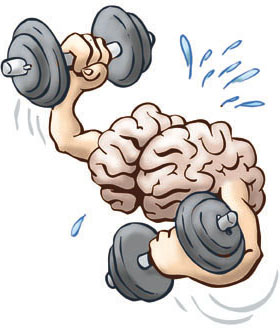Time for a celebration! You’ve got your students actively processing. They have left the ranks of passive learning and their brains are cranking.
What’s next?
Let’s answer that question with a short story. When I was in high school, a student in AP History asked our teacher unironically, “When someone robs a bank wearing a Nixon mask, why doesn’t President Nixon get arrested?”

photocredit: http://www.complex.com

photocredit: http://www.dimensionsinfo.com
I know, right? It’s either a hilarious or horrifying question.
The serious point though is that shoddy thinking is rampant. It’s not just with young people either. How many times have you heard a politician rattle off a tautology without thinking twice? Good thinking is not natural for humans. We are hardwired to be pretty illogical. The thing is, if we don’t improve our thinking, there’s no way we can improve our world. The world that humans create is the product of our thoughts, so…
improving thinking = improving the world!
Thinking, however, is tough to get your hands on – literally. And you can’t improve something that you can’t see.
So the first step to improving thinking is to make it visible. To refine our students’ thinking, that thinking needs to be made concrete – put in writing (diagrams included!) or said aloud.
Consider this scenario. A teacher divides her class into small groups to process new learning. While the students are working in groups, the teacher floats from group to group listening in briefly.
Where in this picture is the thinking? It’s in the students’ conversations – the discussion is the audible representation of students’ thinking. So for our scenario we can check off step one – the students’ thinking is visible.
Once the thinking is visible, we can monitor that thinking and refine it.
****Misconception Alert*******
One of my mistakes has been confusing monitoring students being on-task and monitoring students’ thinking. See the below chart for the difference.
| Monitoring students being on task | Monitoring students’ thinking |
| Listening to make sure students aren’t discussing the latest Bieber album | Listening for any possible misconceptions and either correcting them in the moment or planning to do so in the future |
Of course, the teacher shouldn’t be the only (or even the main) person monitoring a student’s thinking – it should be the student! The goal is to have students monitor their own thinking….automatically. This means students being aware of their own thinking and asking themselves routinely, “Is this logical?”, “Does this make sense?”, and “What assumptions am I making?” Of course that’s just the beginning. In addition to making sure thinking doesn’t contain any shoddy reasoning, students (and all of us) need to constantly check their thinking to make it more clear and precise, ensure they fairly consider different perspectives, and increase its sophistication.
It’s this type of thinking that will save the world (and prevent students from asking why President Nixon wasn’t arrested for knocking over the 7-11. Now that’s something to celebrate).
As you think about this in your own practice, take a moment to see where you are on this rubric for active processing. See where you are, set a goal, and let us know about your journey to deliberately provide experiences for students to make their thinking visible, refine it, and increase its sophistication. This is hard work, but together we can make it happen for our students.





Trackbacks/Pingbacks